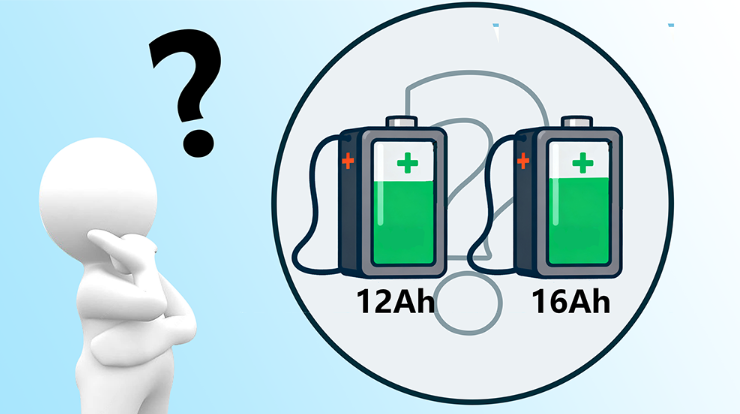
Demystifying Battery Ampere-Hour (Ah): The Essential Guide to Capacity Measurement
Demystifying Battery Ampere-Hour (Ah): The Essential Guide to Capacity Measurement
In our increasingly electrified world, batteries power everything from portable electronics to massive solar energy installations. While most users recognize basic battery specifications, one critical metric often causes confusion: the ampere-hour (Ah) rating. This fundamental measurement holds the key to understanding how long your energy storage systems will actually perform between charges.
This definitive guide breaks down Ah into easily understandable concepts, providing practical knowledge for selecting, maintaining, and optimizing batteries for residential solar systems, backup power applications, and everyday devices.

Defining Ampere-Hour: The Capacity Measurement
Ampere-hour represents the unit of electrical charge capacity, indicating how much current a battery can deliver over time. Imagine your battery as a water reservoir:
- Ah rating corresponds to the total water volume the reservoir can hold
- Higher Ah values indicate greater energy storage capacity
- Lower Ah values mean limited operational duration
Practical examples illustrate this relationship:
- 10Ah battery delivers 10 amps for 1 hour
- Same battery provides 5 amps for 2 hours
- Alternatively, 1 amp for 10 hours
The reservoir analogy extends to usage patterns: rapid discharge resembles opening a large valve, while gradual consumption equals a controlled, smaller flow.
Why Ah Ratings Matter in Real-World Applications
The Ah specification directly impacts system performance across multiple dimensions:
Operational Duration
Higher Ah ratings translate to extended runtime between charging cycles, crucial for solar systems needing overnight power and backup applications requiring sustained operation.
Power Delivery Capability
High-drain devices like power tools and electric vehicles demand batteries with substantial Ah ratings to deliver necessary current without voltage sag or premature shutdown.
Battery Health Management
Understanding Ah capacity helps prevent destructive practices like deep discharging and overloading, significantly extending battery service life.
Calculating Ampere-Hour: Practical Methodology
Determining Ah requires two established electrical parameters: watt-hours (Wh) and voltage (V).
Fundamental Formula:
Ah = Wh ÷ V
Application Examples:
- Portable power bank: 37Wh ÷ 3.7V = 10Ah
- Marine battery: 600Wh ÷ 12V = 50Ah
-
Home energy storage: 5120Wh ÷ 51.2V = 100Ah

These calculations provide theoretical maximums, though real-world conditions typically reduce actual usable capacity.
Factors Impacting Actual Ah Performance
Manufacturers' Ah ratings represent ideal laboratory conditions. Several variables affect real-world performance:
Environmental Conditions
- Elevated temperatures accelerate chemical degradation, reducing effective capacity
- Extreme cold increases internal resistance, limiting current delivery
- Thermal management systems in quality products like VnicePower batteries mitigate these effects
Aging and Usage Patterns
- All batteries experience gradual capacity reduction through charge cycles
- High discharge rates create inefficiencies, reducing available capacity
- Proper maintenance slows degradation, preserving Ah rating longer
Charging Practices
- Consistent overcharging damages internal components
- Frequent deep discharges below recommended levels cause permanent capacity loss
-
Balanced charging protocols maintain optimal performance
Comparative Battery Analysis Using Ah
While Ah provides crucial capacity information, intelligent battery selection requires considering additional factors:
Voltage Compatibility
- Must match device requirements
- Higher voltage systems often deliver power more efficiently
-
Mismatched voltages can damage equipment or underutilize capacity
Physical Characteristics
- Higher Ah typically correlates with increased size and weight
- Installation constraints may limit options
-
Modern lithium technologies offer better energy density
Battery Chemistry Considerations
- Lead-acid: Robust, cost-effective, but heavy with limited cycle life
- Nickel-cadmium: Virtually obsolete due to environmental concerns
- Nickel-metal hydride: Moderate improvement over NiCd
-
Lithium iron phosphate: Superior energy density, cycle life, and efficiency - ideal for solar applications
Optimizing Battery Longevity
Maximizing your investment requires proper maintenance practices:
Environmental Management
- Store and operate within recommended temperature ranges
-
Implement thermal management for high-demand applications
Charging Discipline
- Utilize smart chargers that prevent overcharging
- Avoid complete discharge; maintain 20-30% minimum charge
-
Balance cells periodically in multi-battery systems
Usage Patterns
- Match battery Ah rating to application requirements
- Avoid sustained high-drain applications without adequate recovery periods
-
Implement periodic calibration cycles
Strategic Application in Solar Energy Systems
Solar installations present unique considerations for Ah ratings:
Capacity Sizing
- Calculate daily energy consumption to determine required Ah
- Include contingency for cloudy days and seasonal variations
-
Consider depth of discharge limitations for different chemistries
System Integration
- Ensure compatibility between solar controllers and battery specifications
- Implement proper battery management systems
-
Consider future expansion requirements
Modern VnicePower solutions available at https://vnicepower.store/ incorporate advanced battery management technology that optimizes performance while protecting your investment through intelligent charging and monitoring.
Conclusion: Mastering Ampere-Hour for Better Battery Decisions
Understanding ampere-hour empowers consumers to make informed decisions about energy storage solutions. While Ah provides the foundation for capacity assessment, successful battery selection and maintenance requires considering:
- Voltage compatibility with existing systems
- Physical constraints and weight limitations
- Chemical technology advantages and limitations
- Environmental operating conditions
-
Proper maintenance and charging practices
By mastering Ah fundamentals, you can optimize system performance, extend battery lifespan, and maximize return on investment—particularly crucial for solar energy systems where reliability and efficiency directly impact energy independence and cost savings.

